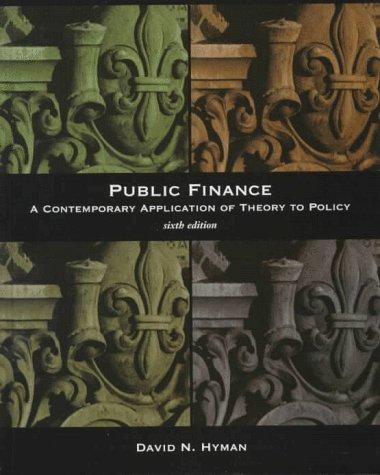Question
1) Under the BIA, a firm may put forth a proposal that can either be accepted or rejected by its: A) creditors B) provincial government
1) Under the BIA, a firm may put forth a proposal that can either be accepted or rejected by its:
A) creditors
B) provincial government
C) shareholders
D) stakeholders
2) There are two relevant acts for financially distressed firms in Canada:
A) the Bankruptcy and Insolvency Act (BIA) and the Companies' Registration Act (CRA)
B) the Bankruptcy and Insolvency Act (BIA) and the Companies' Creditors Arrangement Act (CCAA)
C) the Canada Business Corporations Act (CBCA) and the Companies' Creditors Arrangement Act (CCAA)
D) the Canada Business Corporations Act (CBCA) and the Canada's Corporations Act (CCA)
3) Canadian bankruptcy law was created to ensure that ________ are treated fairly and the value of the assets is not needlessly destroyed.
A) shareholders
B) stakeholders
C) creditors
D) owners
4) The BIA usually applies to ________ while the CCAA applies to firms that owe ________ to creditors.
A) small businesses; $1 million or less
B) big business; $1 million or less
C) small businesses; $5 million or more
D) big business; $5 million or more
5) Which of the following statements is false?
A) Whether paid by the firm or its creditors, the indirect costs of bankruptcy increase the value of the assets that the firm's investors will ultimately receive.
B) In addition to the money spent by the firm, the creditors may incur costs during the bankruptcy process.
C) The bankruptcy code is designed to provide an orderly process for settling a firm's debts.
D) To ensure that their rights and interests are respected, and to assist in valuing their claims in a proposed reorganization, creditors may seek separate legal representation and professional advice.
Answer:
Explanation:
6) Which of the following is NOT an indirect cost of bankruptcy?
A) Legal Fees
B) Delayed Liquidation
C) Costs to Creditors
D) Loss of Customers
7) Which of the following is NOT an indirect cost of bankruptcy?
A) Loss of Suppliers
B) Fire Sales of Assets
C) Costs of Appraisers
D) Loss of Employees
8) Which of the following is NOT a direct cost of bankruptcy?
A) Costs to Creditors
B) Investment Banking Costs
C) Costs of accounting experts
D) Legal Costs and Fees
9) List five general categories of indirect costs associated with bankruptcy.
Answer:
Step by Step Solution
There are 3 Steps involved in it
Step: 1

Get Instant Access to Expert-Tailored Solutions
See step-by-step solutions with expert insights and AI powered tools for academic success
Step: 2

Step: 3

Ace Your Homework with AI
Get the answers you need in no time with our AI-driven, step-by-step assistance
Get Started


